Our liquid dye instructions will help explain how to use Aquarelle and other liquid dyes. These dyes are convenient, easy to use, and produce beautiful, harmonious colors. Each dye comes from a leaf, root, bark or other natural source and has been used for generations by cultures all over the world.
- Cutch Liquid: A sweet-smelling brown.
- Himalayan Rhubarb Liquid: a rich gold from the rhubarb roots. This plant is also used in traditional herbal medicine.
- Liquid Logwood: a beautiful purple originally from Central America.
- Madder Liquid: one of the most ancient dyes. This is the red of Persian rugs.
- Myrobalan Liquid: A soft butter-yellow.
- Pomegranate Liquid: a green-gold when used alone. This dye also makes beautiful aqua colors when combined with Saxon Blue
- Saxon Blue liquid indigo: a striking blue derived from the indigo plant. This recipe dates to 1740.
Note: Saxon Blue works best with wool, silk and animal fibers. It does not dye cotton, linen, Tencel, Modal or other plant fibers. - Tannin Liquid: A light buff shade.
Safety
- Always closely supervise children and keep pets away when working around hot liquids and dyes.
- We recommend using gloves when working with the dyes. Although they are non-toxic, they can stain. If you are chemically sensitive, you may wish to use a dust mask when measuring alum powder. Keep dyes and powders away from young children and pets.
- Always clean up spills immediately
- Don’t mix your kitchen utensils with your dyeing utensils.
- Dispose of exhausted dye baths by pouring down the drain.
Fiber Preparation and Mordanting
We offer scouring and mordanting instructions for wool, alpaca, silk (protein), and cotton and plant (cellulose) fibers on these How To pages.
Calculating the Amount of Dye to Use
To calculate the amount of dye you want to use, you will first find out the weight of the material you want to dye. This is known as the Weight of Fiber (WOF). Weigh your textiles when they are dry to get the WOF. The amount of dye that you need is then calculated as a percentage of the WOF.
For example, an average large cotton t-shirt weighs approximately 150g. To dye it a dark brown shade with liquid cutch, you could use 20% of the weight of the shirt (30g) of liquid cutch. The following table shows general guidelines for how much of each liquid dye you should use for various shades.
| Dye | Color | Light | Medium | Dark |
|---|---|---|---|---|
| Liquid Cutch | Brown | 1-2% WOF | 5-10% WOF | 20% WOF |
| Liquid Himalayan Rhubarb | Gold/brown | 1-2% WOF | 5-6% WOF | 10% WOF |
| Liquid Logwood | Purple | 0.5% WOF | 5-8% WOF | 10-15% WOF |
| Liquid Madder | Red | 1-2% WOF | 5-6% WOF | 10% WOF |
| Liquid Myrobalan | Yellow | 1-2% WOF | 5-6% WOF | 10% WOF |
| Liquid Pomegranate | Yellow | 1-2% WOF | 5-6% WOF | 10% WOF |
| Liquid Tannin | Beige | 1-2% WOF | 5-6% WOF | 10% WOF |
| Saxon Blue Liquid | Blue | 1-5% WOF | 10-12% WOF | 20% WOF |
How to Dye with Liquid Dyes
- Shake dyes well before use as they tend to separate.
- Measure out the desired amount of dye(s). Add to a dye pot filled with enough water so the fibers can move easily without excessive crowding. Stir the pot so the dye is evenly dispersed.
- Add the yarn or fibers to the pot.
- Begin heating the pot until it reaches 90°F/30°C. Rotate the fibers gently to avoid felting or tangles. Hold at this temperature for 30 minutes.
- Bring the heat up to 180°F/80°C and hold for 30-45 minutes. The dyebath should look very light or nearly clear (exhausted).
- You may let the fibers cool in the dyebath until they are safe to handle, except for Saxon Blue. Remove Saxon Blue as soon as possible after dyeing. Rinse the dyed fibers in warm water.
- If the dyebath still contains a lot of dye, add ¼ cup (50 ml) white (distilled) vinegar and continue a low simmer for another 30 minutes, then let cool overnight in the dyebath. Rinse in cool water.
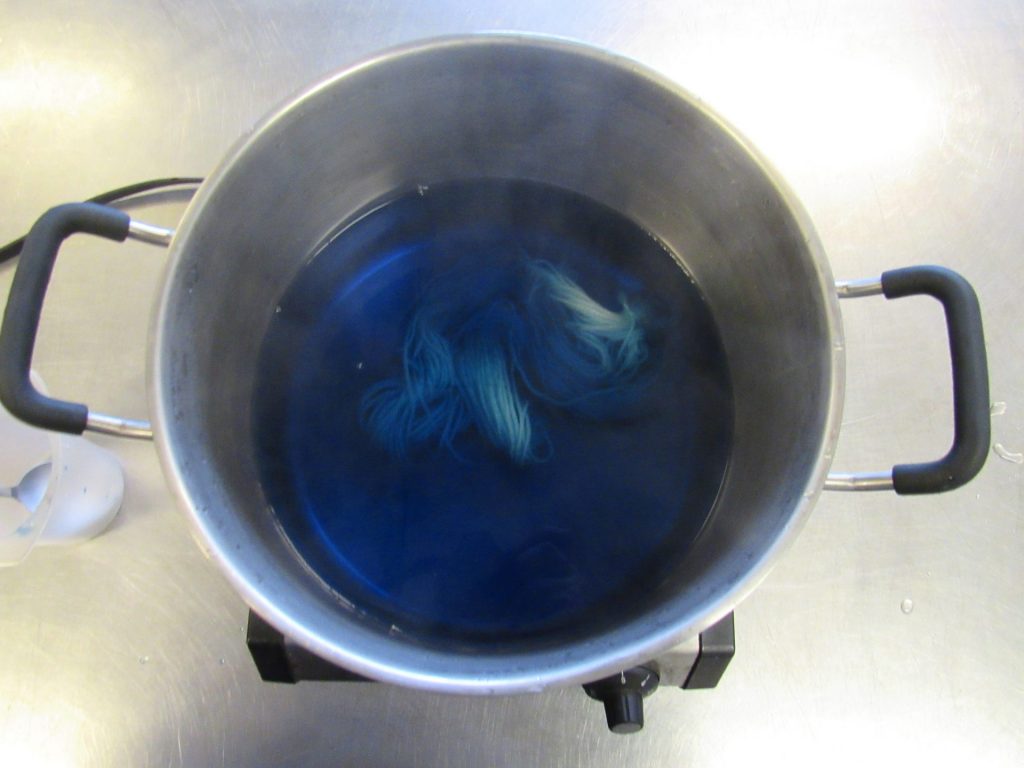
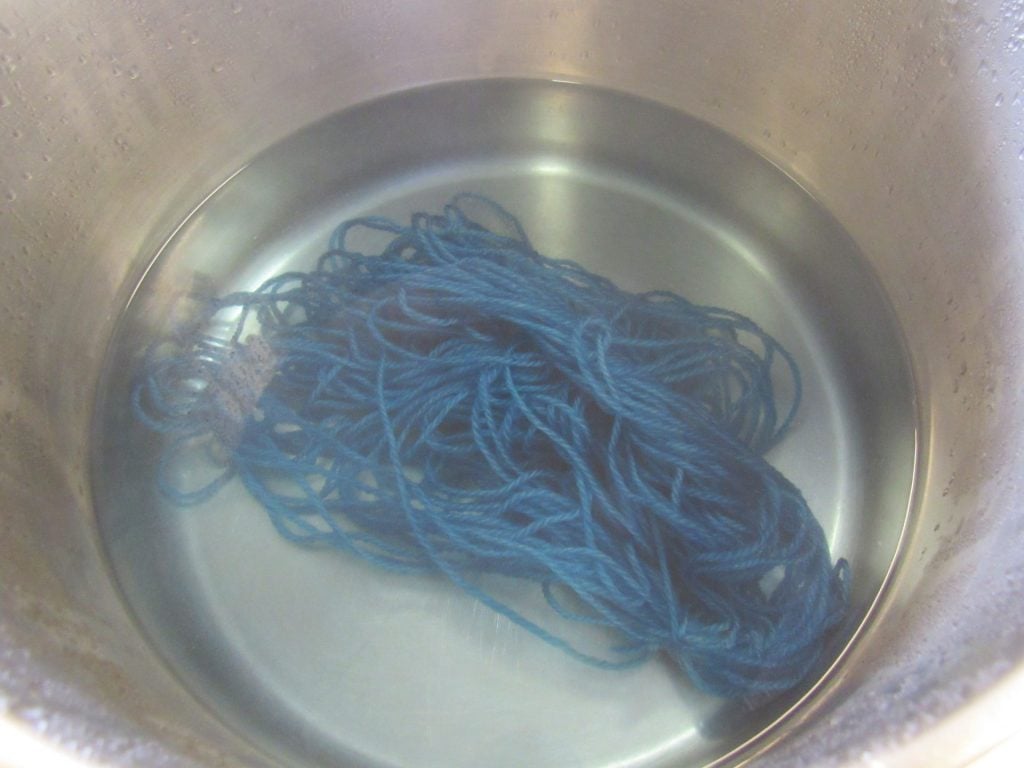
Color Blending
Liquid dyes can be combined to create even more colors and shades. Simply calculate the WOF as described above and use two or more dyes together to get the amount of dye you need. For example, if you want to dye a 100g skein of yarn a purple color without logwood, you could use 5% WOF Saxon Blue and 5% WOF madder (for a total dye weight that is 10% of your WOF).
Add all of your liquid dyes to the dyepot, stir the pot so the dye is dispersed, then add your fiber and follow the procedure as listed above.
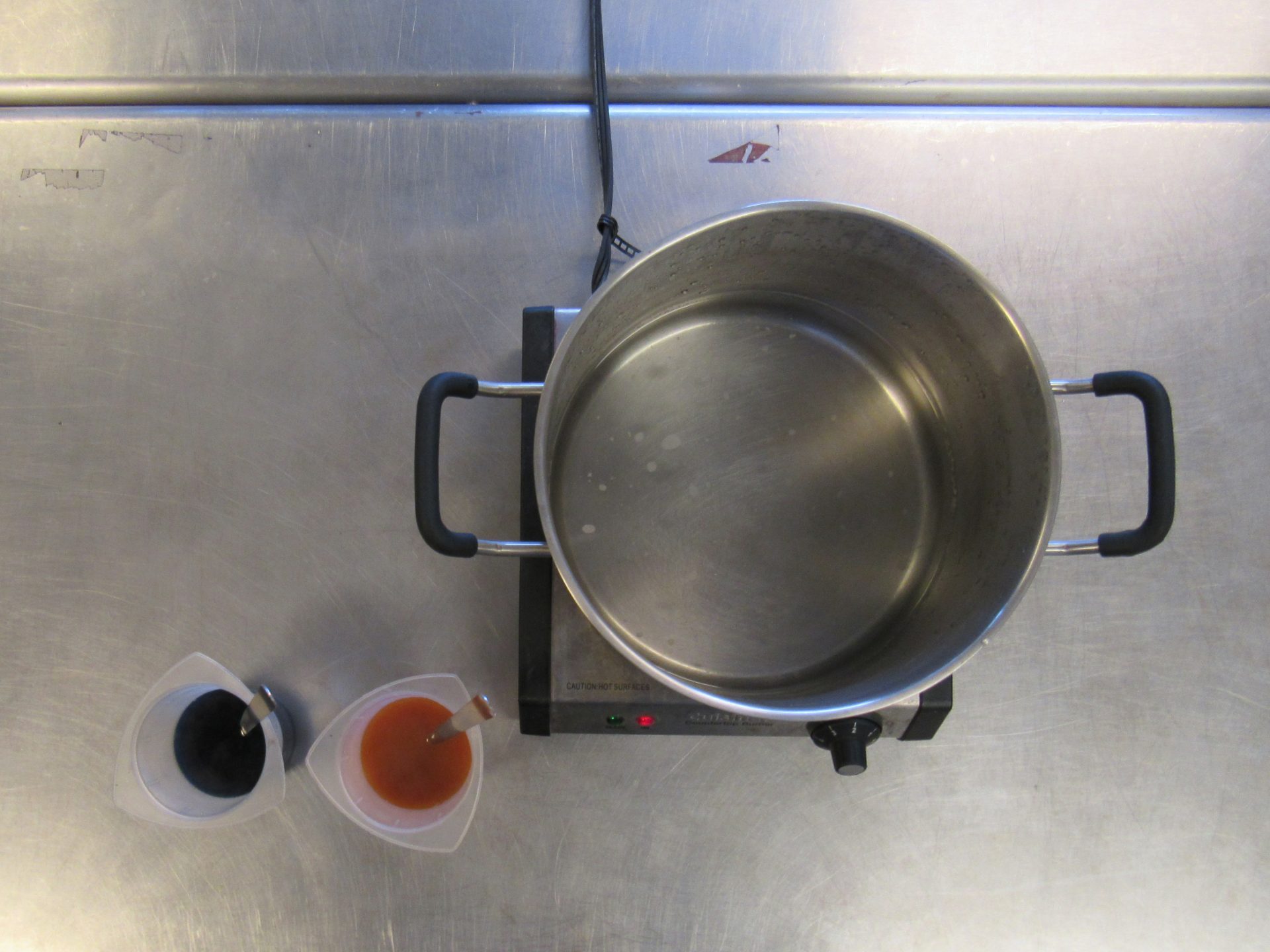
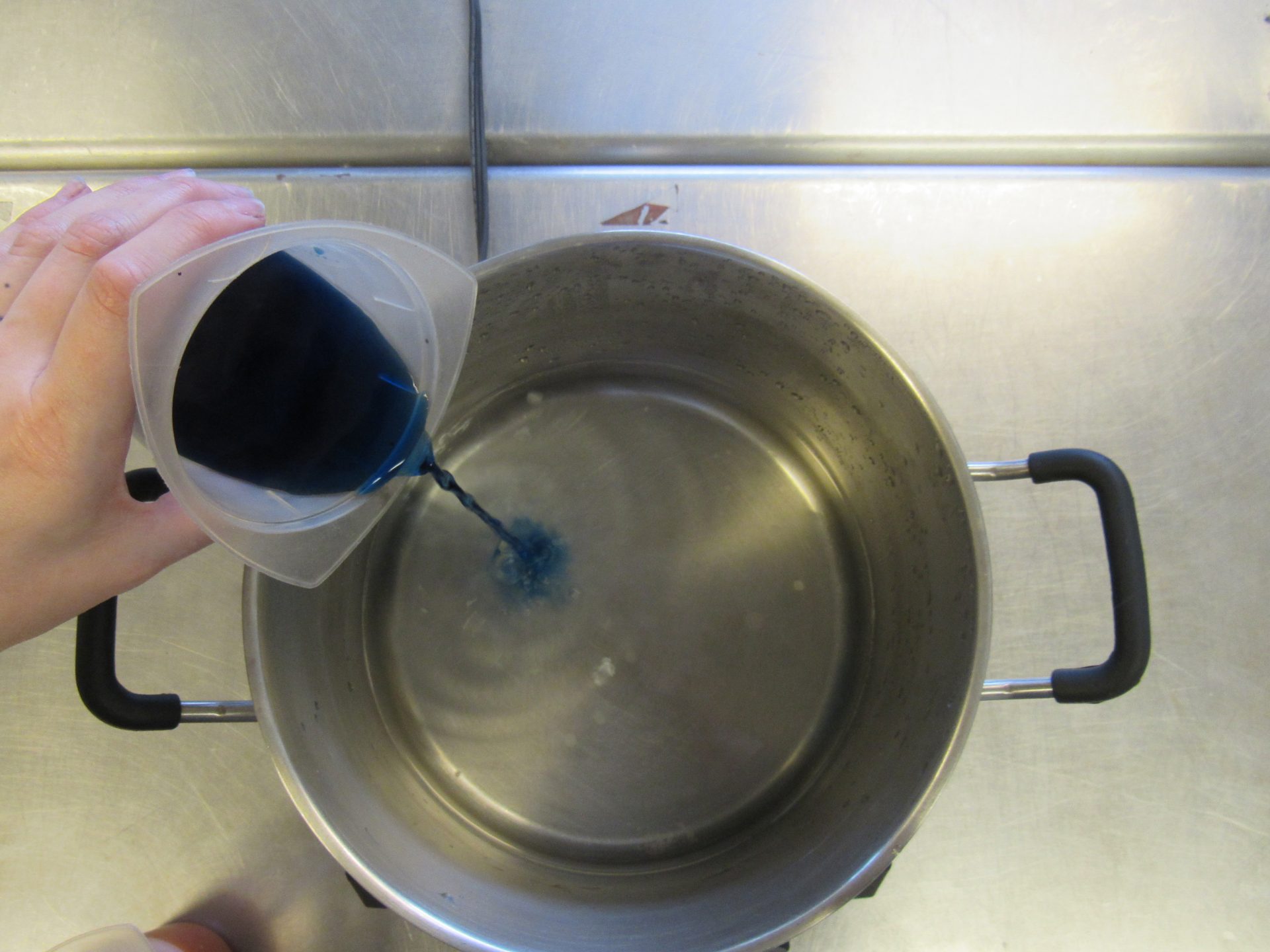
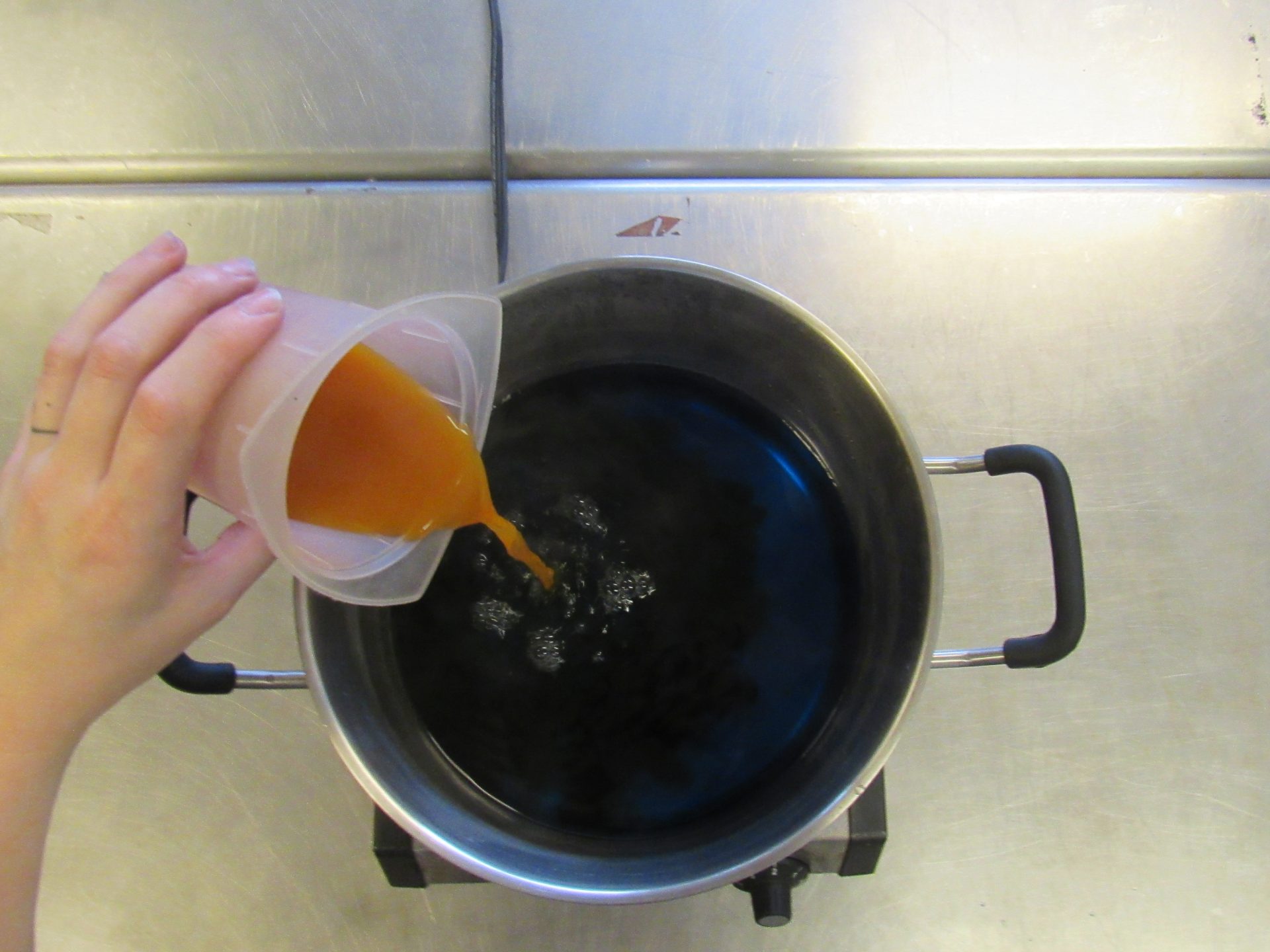
Color Combinations

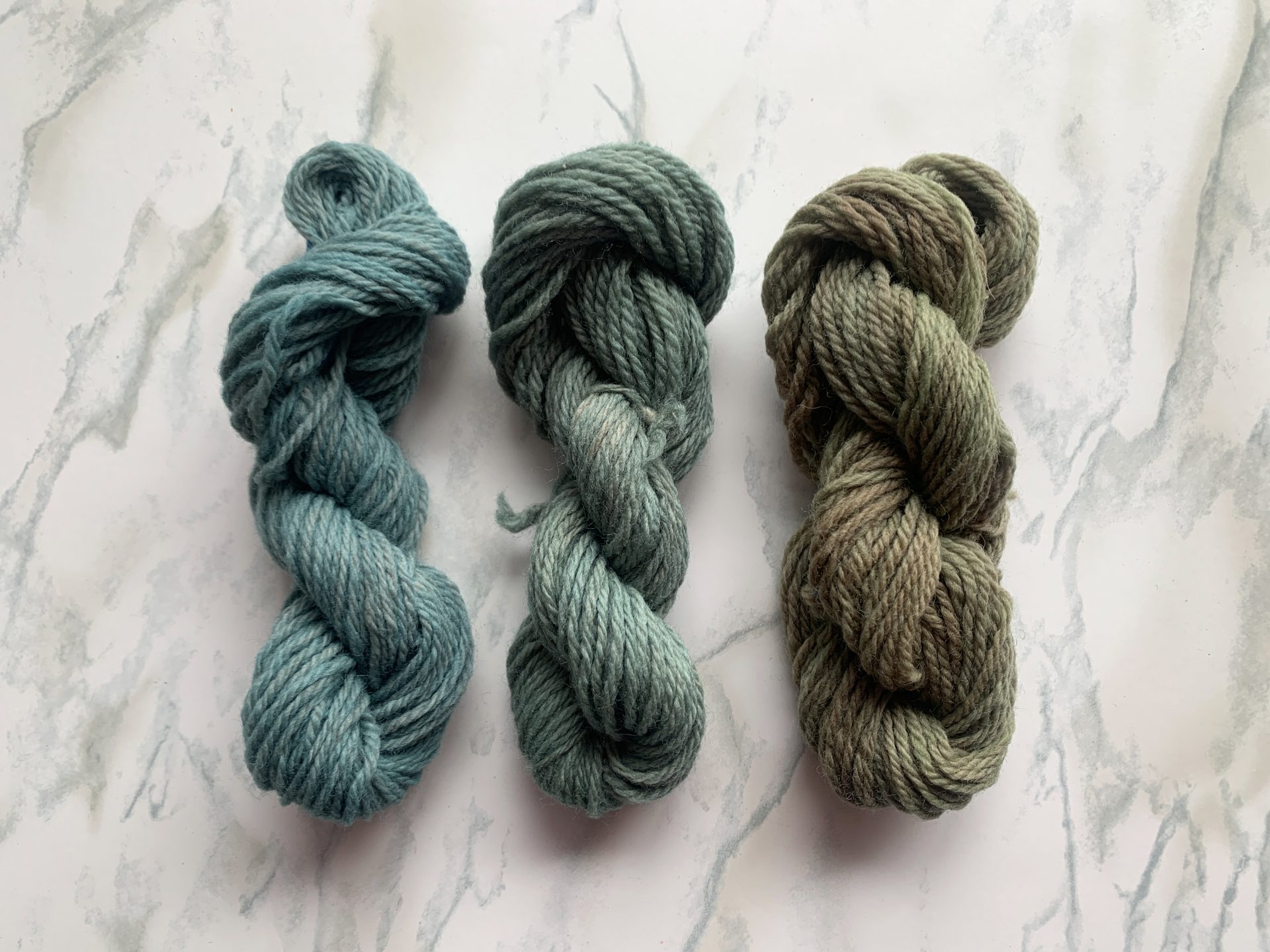
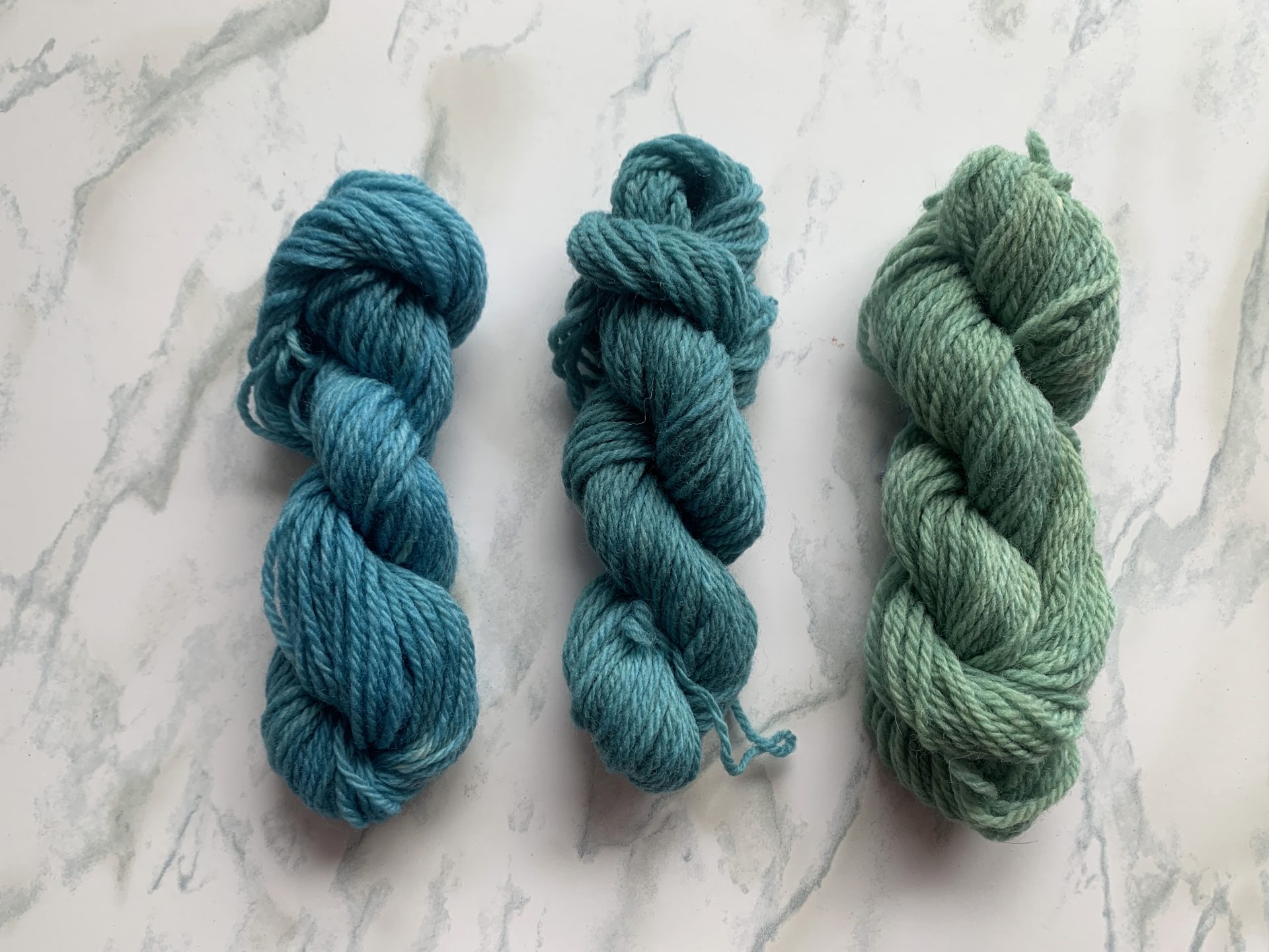

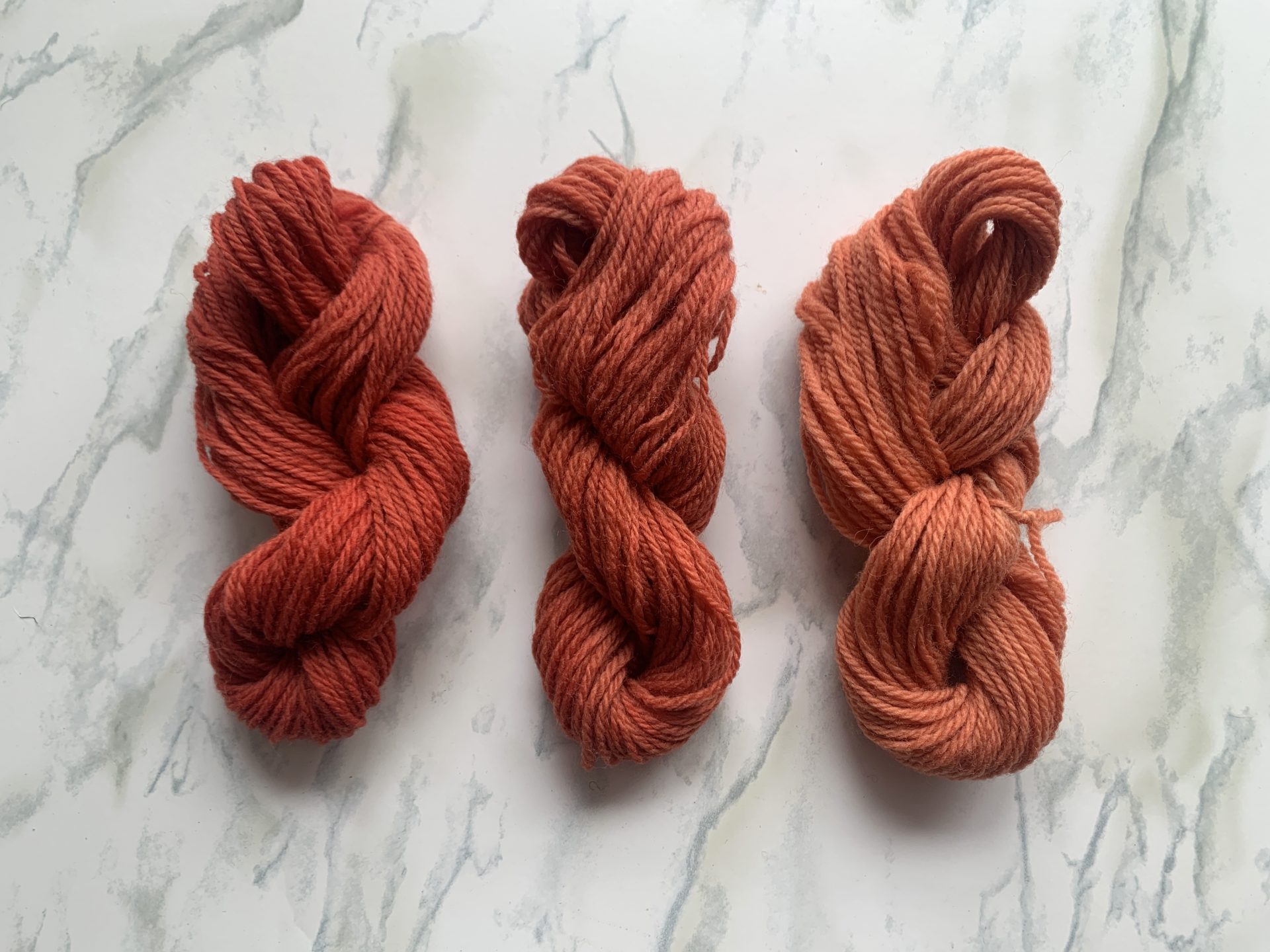
Assists
You can also add different assists to your dyepot to create even more colors. Dissolve these in water before adding them to the dyebath along with your liquid dyes.
- Madder with a pinch of soda ash will make a bright purple.
- Madder with a pinch of calcium carbonate will make a cherry red.
- Cutch with a pinch of soda ash will make a reddish russet.
- Tannin with iron is considered the most ancient recipe for dark gray and black.
Notes and Troubleshooting
- If the fibers seem to be bleeding excessive amounts of dye while you are rinsing, stop and let the freshly dyed fibers air dry completely. Once the fibers are dry, rinse them again and air dry.
- Saxon blue dyes wool best. If using Saxon blue with silk, add a tablespoon (15 ml) of white vinegar to the dye bath prior to dyeing.
Please email usif you have any questions on our liquid dye instructions. Our email is [email protected] and we enjoy hearing from you. Have fun on the color journey!
